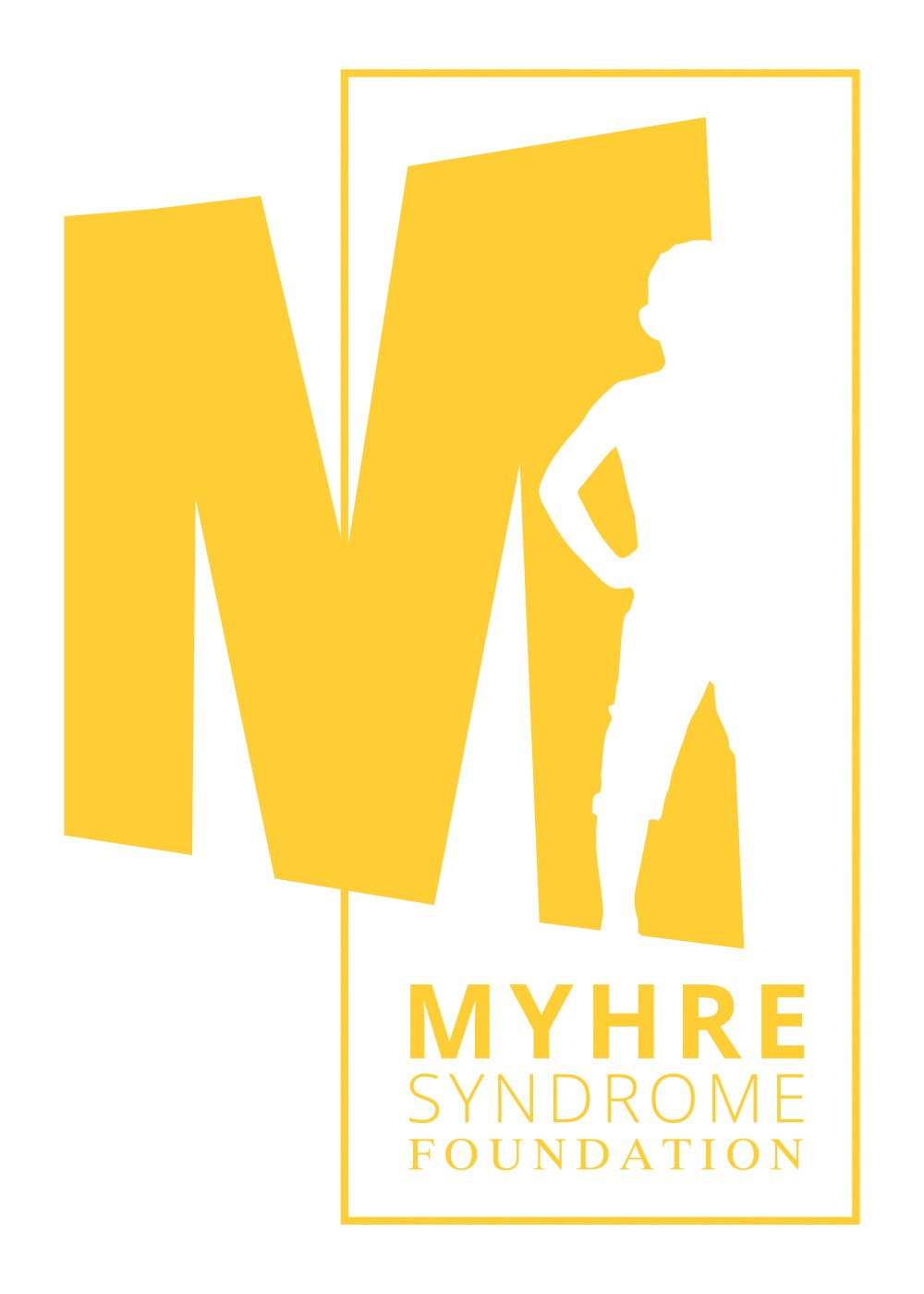More…
Neoplasia
We describe six patients (two not previously reported) with molecularly confirmed Myhre syndrome and neoplasia. Loss‐of‐function pathogenic variants in SMAD4 cause juvenile polyposis syndrome and we hypothesize that the gain‐of‐function pathogenic variants observed in Myhre syndrome may contribute to neoplasia in the patients reported herein. The frequency of neoplasia (9.8%, 6/61) in this series (two new, four reported patients) and endometrial cancer (8.8%, 3/34, mean age 40 years) in patients with Myhre syndrome, raises the possibility of cancer susceptibility in these patients. We alert clinicians to the possibility of detecting this syndrome when cancer screening panels are used. We propose that patients with Myhre syndrome are more susceptible to neoplasia, encourage increased awareness, and suggest enhanced clinical monitoring.
Gain-of-function pathogenic variants in SMAD4 are associated with neoplasia in Myhre syndrome
Angela E. Lin Abdulrazak Alali, Lois J. Starr, Nidhi Shah, Anna Beavis, Elaine M. Pereira, Mark E. Lindsay, Susan Klugman
First published: 14 December 2019
Growth
The acromelic dysplasia group is characterized by short stature, short hands and feet, stiff joint, and “muscular” build. Four disorders can now be ascribed to this group, namely Weill–Marchesani syndrome (WMS), geleophysic dysplasia (GD), acromicric dysplasia (AD), and Myhre syndrome (MS). Although closely similar, they can be distinguished by subtle clinical features and their pattern inheritance. WMS is characterized by the presence of dislocation of microspherophakia and has autosomal dominant or recessive mode of inheritance. GD is the more severe one, with a progressive cardiac valvular thickening, tracheal stenosis, bronchopulmonary insufficiency, often leading to an early death. AD has an autosomal dominant mode of inheritance, distinct facial and skeleton features (a hoarse voice and internal notch of the femoral head). Finally, MS is sporadic, characterized by prognathism, deafness, developmental delay, thickened calvarium, and large vertebrae with short and large pedicles. We first identified mutations in Fibrillin‐1 (FBN1) in the dominant form of WMS and then mutations in A Disintegrin‐like And Metalloproteinase domain with ThromboSpondin type 1 repeats 10 (ADAMTS10) in the recessive form of WMS. The function of ADAMTS10 is unknown but these findings support a direct interaction between ADAMTS10 and FBN1. We then identified mutations in ADAMTSL2 in the recessive form of GD and a hotspot of mutations in FBN1 in the dominant form of GD and in AD (exon 41–42, encoding TGFβ binding protein‐like domain 5 (TB5) of FBN1). The function of ADAMTSL2 is unknown. Using a yeast double hybrid screen, we identified latent transforming growth factor‐β (TGFβ) binding protein 1 as a partner of ADAMTSL2. We found an increased level of active TGFβ in the fibroblast medium from patients with FBN1 or ADAMTSL2 mutations and an enhanced phosphorylated SMAD2 level, allowing us to conclude at an enhanced TGFβ signaling in GD and AD. Finally, a direct interaction between ADAMTSL2 and FBN1 was demonstrated suggesting a dysregulation of FBN1/ADAMTSL2 interrelationship as the underlying mechanism of the short stature phenotypes. Using exome sequencing in MS probands, we identified de novo SMAD4 missense mutations, all involving isoleucine residue at position 500, in the MH2 domain. In MS fibroblasts, we found decreased ubiquitination level of SMAD4 and increased level of SMAD4 supporting a stabilization of SMAD4 protein. Functional SMAD4 is required for canonical signal transduction through the oligomerization with phosphorylated SMAD2/3 and SMAD1/5/8. We therefore studied the nuclear localization of mutant SMAD complexes and found that the complexes translocate to the nucleus. We finally observed a decreased expression of downstream TGFβ target genes supporting impaired TGFβ driven transcriptional control in MS. Our findings support a direct link between the short stature phenotypes and the TGFβ signaling. However, the finding of enhanced TGFβ signaling in Marfan phenotypes supports the existence of yet unknown mechanisms regulating TGFβ action. © 2012 Wiley Periodicals, Inc.
From tall to short: The role of TGFβ signaling in growth and its disorders
Carine Le Goff, Valérie Cormier‐Daire
Am J Med Genet Part C Semin Med Genet.
First published: 12 July 2012
Hearing
MassGeneral Hospital Myhre Syndrome Clinic patient resources
Family Recurrence
Myhre syndrome is a rare multisystem connective tissue disorder, characterized by short stature, facial dysmorphology, variable intellectual disability, skeletal abnormalities, arthropathy, cardiopathy, laryngotracheal anomalies, and stiff skin. So far, all molecularly confirmed cases harbored a de novo heterozygous gain‐of‐function mutation in SMAD4, encoding the SMAD4 transducer protein required for both transforming growth factor‐beta and bone morphogenic proteins signaling. We report on four novel patients (one female proband and her two affected children, and one male proband) with Myhre syndrome harboring the recurrent c.1486C>T (p.Arg496Cys) mutation in SMAD4. The female proband presented with a congenital heart defect, vertebral anomalies, and facial dysmorphic features. She developed severe tracheal stenosis requiring a total laryngectomy. With assisted reproductive treatment, she gave birth to two affected children. The second proband presented with visual impairment following lensectomy in childhood, short stature, brachydactyly, stiff skin, and decreased peripheral sensitivity. Transmission electron microscopy (TEM) of the dermis shows irregular elastin cores with globular deposits and almost absent surrounding microfibrils and suggests age‐related increased collagen deposition. We report on the first familial case of Myhre syndrome and illustrate the variable clinical spectrum of the disorder. Despite the primarily fibrotic nature of the disease, TEM analysis mainly indicates elastic fiber anomalies.
Myhre syndrome: A first familial recurrence and broadening of the phenotypic spectrum
Ilse Meerschaut, Aude Beyens, Wouter Steyaert, Riet De Rycke, Katrien Bonte, Tine De Backer, Sandra Janssens, Joseph Panzer, Frank Plasschaert, Daniël De Wolf, Bert Callewaert
First published: 09 October 2019
We appreciate the generosity of Wiley Publishing who have provided links to courtesy copies of their articles.
